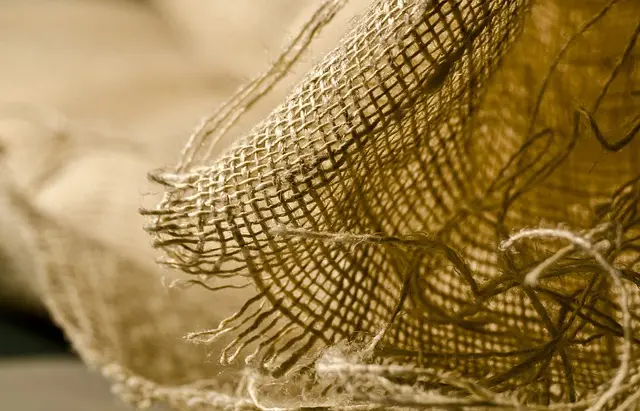In Oklahoma, where active lifestyles are supported by a favorable climate, muscle soreness is a common concern for residents engaging in physical activities. Kratom, sourced from the Mitragyna speciosa plant and native to Southeast Asia, has emerged as a natural remedy for this discomfort, particularly due to its alkaloids like 7-hydroxymitragynine and mitragynine. These compounds are believed to interact with opioid receptors to manage pain. Kratom strains such as Maeng Da and Bali are prevalent in Oklahoma, often consumed in powder or capsule form. While its efficacy for muscle soreness is an area of ongoing scientific investigation, user experiences have been largely positive, suggesting that kratom could serve as a natural alternative to stronger pharmaceuticals. However, it's imperative to approach kratom with caution, considering legal restrictions and potential side effects, especially since interactions with other medications can occur. Consulting healthcare professionals before integrating kratom into one's health regimen is crucial for safe use, particularly in Oklahoma where state-specific laws govern its legality. The interest in kratom reflects a broader trend of seeking effective, natural pain management solutions that complement the state's active lifestyle and diverse wellness approaches.
Muscle soreness can be a persistent challenge for individuals engaging in physical activities, particularly in states like Oklahoma where residents often participate in outdoor and labor-intensive pursuits. Exploring the intersection of natural remedies and muscle health, this article delves into how kratom, a plant-based substance increasingly recognized in Oklahoma’s wellness communities, may offer relief from muscle soreness. We will unpack the scientific rationale behind kratom’s potential analgesic effects, provide safety guidelines for its application, and contextualize its use within the broader health landscape of Oklahoma. Join us as we navigate the therapeutic potential of kratom for muscle recovery and pain management in a state known for its active lifestyle.
- Understanding Muscle Soreness and the Role of Kratom in Oklahoma
- The Science Behind Kratom's Analgesic Properties for Muscle Relief
- Guidelines for Safely Using Kratom to Alleviate Muscle Soreness in Oklahoma
Understanding Muscle Soreness and the Role of Kratom in Oklahoma

Muscle soreness, often characterized by discomfort or pain in the soft tissues, can be a common issue for individuals engaging in physical activities, particularly those involving unaccustomed exertion. In Oklahoma, where outdoor and athletic pursuits are popular year-round, managing muscle soreness is both a health concern and a matter of maintaining an active lifestyle. Kratom, a botanical supplement derived from the leaves of Mitragyna speciosa, has garnered attention for its potential role in alleviating muscle pain. In Oklahoma, where kratom usage has been on the rise, many residents are exploring this natural remedy as an alternative to traditional pain relief options. The alkaloids found in kratom leaves, such as 7-hydroxymitragynine and mitragynine, are believed to interact with the body’s opioid receptors, which may help in reducing pain sensation and promoting a sense of well-being. While research is ongoing to fully understand its mechanisms and effects, anecdotal evidence and user reports from Oklahoma suggest that kratom can provide significant relief for muscle soreness, allowing individuals to maintain their active lifestyles without resorting to strong pharmaceuticals. Users in Oklahoma often turn to kratom strains like Maeng Da or Bali for their pain-relieving properties, typically consuming it in powder form, which can be mixed with beverages or encapsulated. It’s important for potential users to approach kratom with caution and consult healthcare professionals before integrating it into their wellness routine, as the substance is subject to legal regulations and may have side effects or interactions with other medications. Understanding the nuances of muscle soreness relief with kratom requires a balance of empirical evidence and personal experience, a pursuit that resonates with many in the diverse state of Oklahoma.
The Science Behind Kratom's Analgesic Properties for Muscle Relief

Kratom, a plant native to Southeast Asia and increasingly available in places like Oklahoma, has garnered attention for its potential analgesic properties. The active compounds found in kratom leaves, namely mitragynine and 7-hydroxymitragynine, are thought to interact with the body’s opioid receptors, providing pain relief without the side effects commonly associated with prescription opioids. Studies have suggested that these alkaloids can modulate pain signals, offering muscle soreness relief that is both natural and effective. In animal models, kratom has been observed to reduce pain responses, indicating its potential as a therapeutic agent for muscle discomfort.
Researchers are examining the mechanisms by which kratom exerts its analgesic effects. It appears that kratom’s action on mu-opioid receptors is partly responsible for its analgesic properties, but it may also involve interactions with other neurotransmitter systems such as noradrenaline and dopamine, which could contribute to its muscle-relaxing effects. Users in Oklahoma who seek relief from muscle soreness, whether from exercise, injury, or chronic conditions, have reported positive experiences with kratom. It is important to note that while anecdotal evidence and preliminary studies are promising, more research is needed to fully understand the efficacy and safety profile of kratom for muscle pain relief. As such, individuals interested in using kratom should consult healthcare professionals to ensure safe and responsible use.
Guidelines for Safely Using Kratom to Alleviate Muscle Soreness in Oklahoma

When exploring the use of kratom for muscle soreness relief in Oklahoma, it is crucial to adhere to guidelines that ensure safety and efficacy. Kratom, a plant from Southeast Asia, has gained attention for its potential analgesic properties, which may help alleviate muscle pain. Residents of Oklahoma considering kratom should first be aware of the legal status of the substance within the state, as regulations can vary and may impact availability and legality. It’s important to stay updated on these laws to avoid any legal complications.
Before incorporating kratom into a muscle soreness regimen, it is advisable to consult with a healthcare provider, especially given Oklahoma’s diverse climate, which can exacerbate muscle strain or injury. A knowledgeable professional can provide personalized advice and monitor your use to prevent adverse effects. Additionally, dosage is a key factor in safely using kratom; starting with a lower dose and gradually adjusting based on individual tolerance is prudent. Strains like Maeng Da or Bali are often preferred for their pain-relieving qualities, but personal experience will vary. Users should also be mindful of potential interactions with other medications and should avoid combining kratom with alcohol or substances that can impair liver function. By following these guidelines, Oklahoma residents can explore the benefits of kratom for muscle soreness relief while prioritizing their health and safety.
Muscle soreness can be a persistent challenge, particularly for those who engage in physically demanding activities or suffer from chronic pain. The insights presented reveal how Kratom, within the context of Oklahoma’s regulatory framework, may offer relief to many seeking respite from discomfort. Exploring the scientific underpinnings of Kratom’s analgesic effects has illuminated its potential as a natural alternative for muscle soreness management. However, it is imperative to approach its use with caution and adhere to safe consumption guidelines. By understanding both the benefits and limitations associated with Kratom, individuals in Oklahoma can make informed decisions about incorporating this substance into their wellness routines. As such, Kratom’s role in addressing muscle soreness merits further research and consideration within the state’s medical community and among consumers alike.






